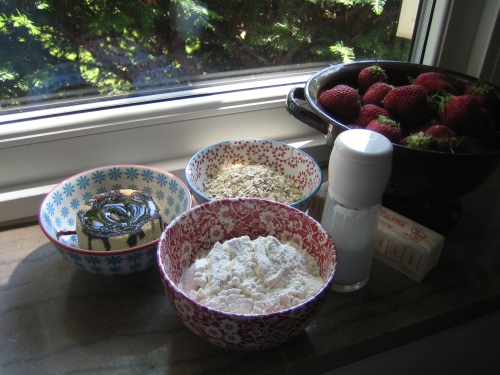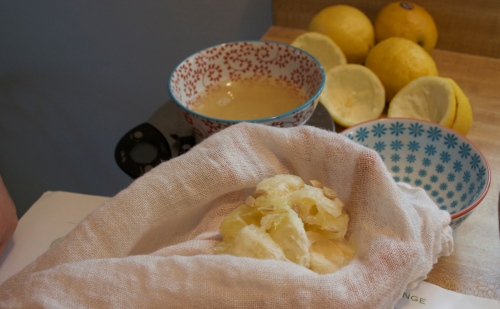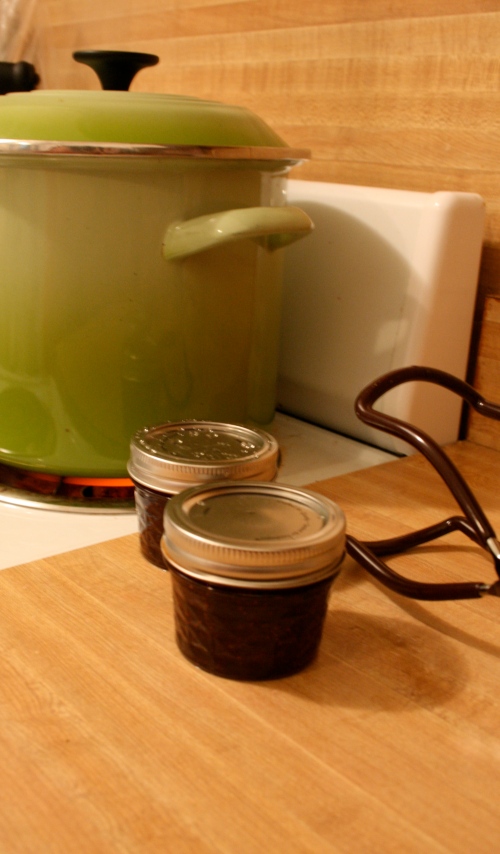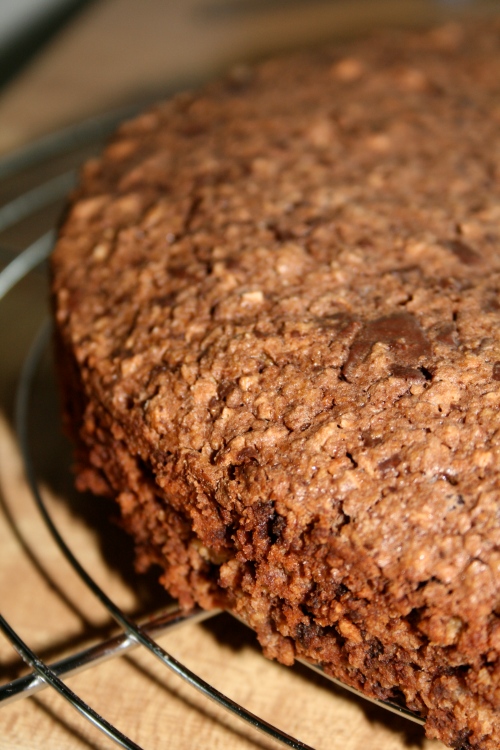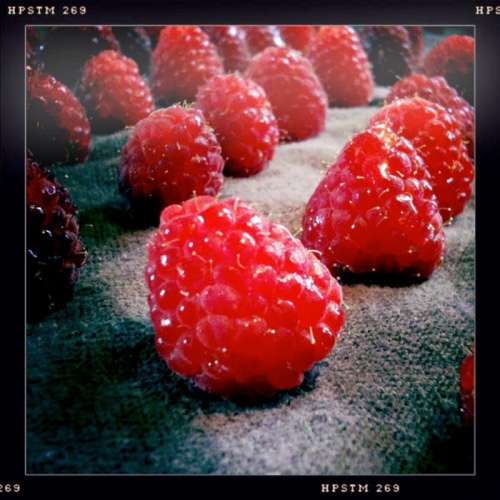
I am always looking for a flaky pie crust recipe, especially for one where the flavor hasn’t been compromised. Too often the baker will forgo flavor for texture. I admit, I have made the odd shortening crust but to no avail. Since I live in Michigan and when there is fruit, there is fruit! I decided to get a head start on my search for the perfect crust. I did some reading in various cookbooks and found some helpful information and an interesting recipe in Baking by James Peterson (my current favorite book of baking basics.) I decided to give it a shot. I was a little wary of using cake flour in the mix but as I read on, I came to learn that this could only make it better! For a flaky crust, all-purpose flour has too high of a gluten level (resulting in dough that can easily be very hard) and cake flour has too low of a gluten level (resulting in a dough that can’t hold together.) Apparently, using half all-purpose and half cake flour is just the right level of gluten to produce a delicate and flaky crust. The recipe called for a little more butter than I usually use, this I am sure added to the flavor and flake.

I put both flours, and some salt in a bowl and then added large cubes of cold butter. The recipe instructed me to cut the butter in until the pieces were “no larger than a hazelnut and no smaller than a small pea.” I then added some ice water and mixed that in until all of the flour was incorporated. (note: I am not used to working the dough as much as I did for this recipe but, it reassured me that I wouldn’t over-work it.) Then I turned the dough out onto the counter and kneaded it a couple of times. I separated it into two pieces and chilled them both for about 30 minutes.
Meanwhile, I planned my fillings. I had some rhubarb, raspberries, and meyer lemons (courtesy of Claire’s mom’s tree in Berkeley.) I thought it best to make a pie and a tart.
For the pie, I chose rhubarb.

Rhubarb pie filling:
- 5 cups rhubarb, cut into 3/4″ pieces
- 1 scant cup sugar
- Juice of 1/4 of an orange
- 1/2″ piece of fresh ginger, minced
- approximately, 3 Tablespoons flour
I tossed everything together in a mixing bowl…
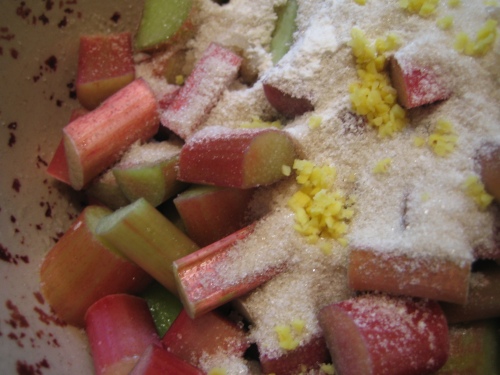
…put it in the pie crust, and popped it in the oven at 400*F. I baked it for about an hour and 15 minutes and it was still really juicy so I added a little crumble top to soak up some juice. After adding the topping, I baked it for about another 20 minutes. (Note: my oven is small and runs cool, you may need to adjust baking time accordingly.)

The pie turned out very well, the crumble top accomplished it purpose of soaking up extra juice; the orange and ginger were just the right strength so you could still taste the rhubarb.
For the tart, I chose raspberries and meyer lemons.

I rolled out the crust and lined a nice rectangular tart pan with it.To stop the crust from bubbling up, I pricked the dough with and fork and then I put a generously sized piece of parchment paper in it and filled it with rice. I baked the crust for about 15 minutes, removed the rice and baked it for another 15 minutes, until it was slightly golden.

I set the shell aside to cool and prepared the various fillings.
For the base layer, I mixed a little bit of wildflower honey into some tangy yogurt. The next layer called for the meyer lemons. I used the zest and juice and made a simple curd.
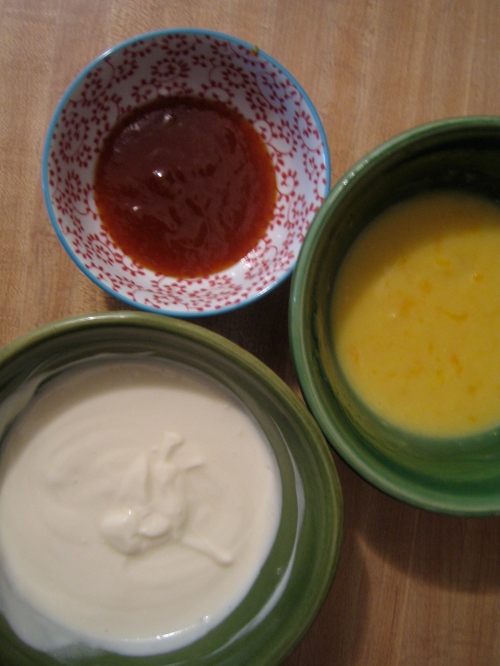
Once the layers had been spread…
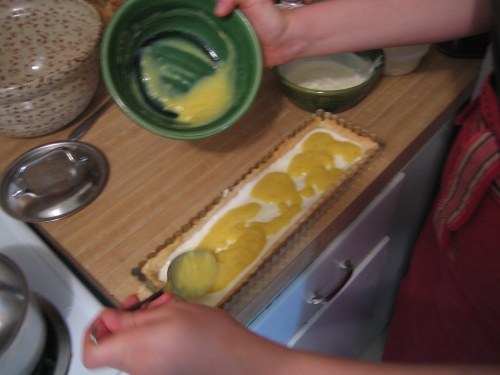
an army of red raspberries marched onto the battlefield…

only to be beat out by an apricot glaze.

The crust was very flavorful and flaky! All in all, a success! Here is a picture of the cross section, sorry it is so blurry…

Read Full Post »
